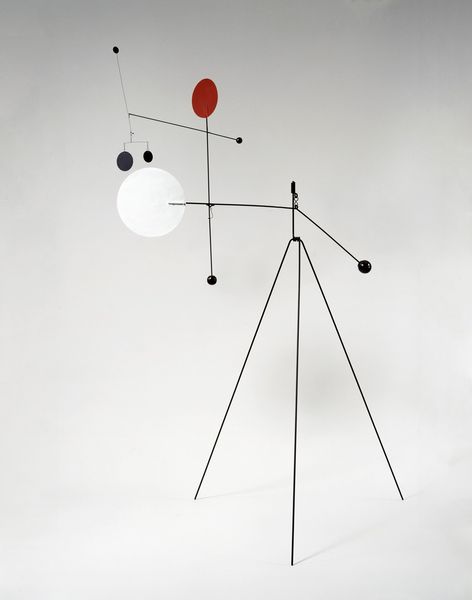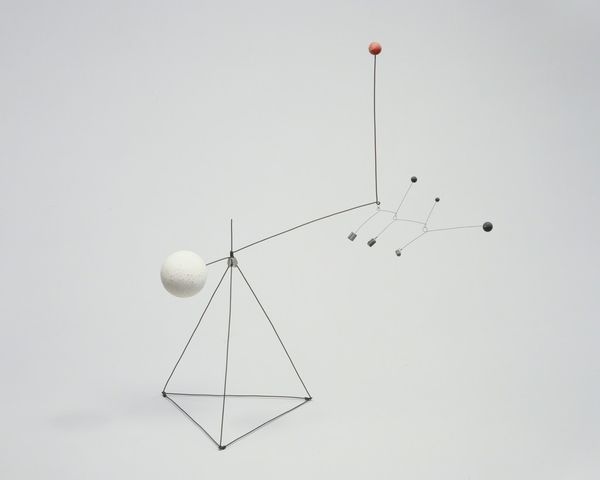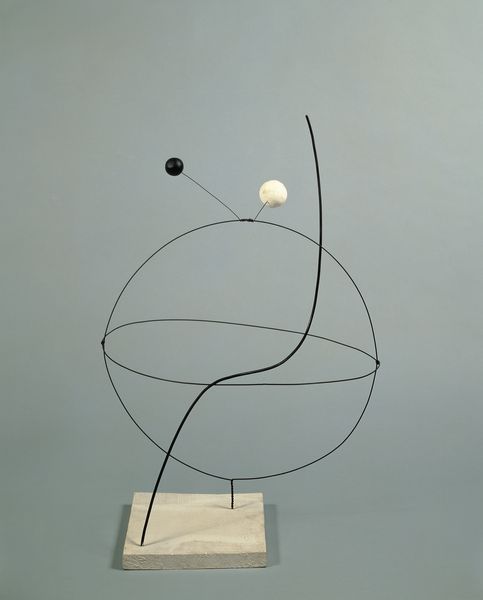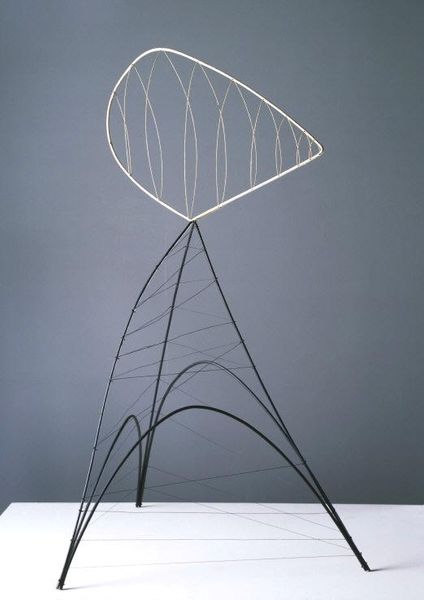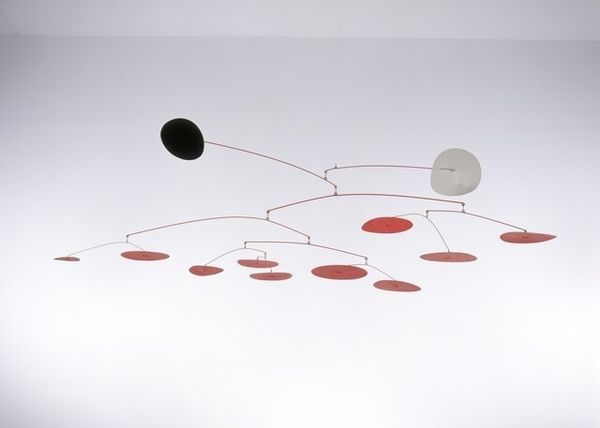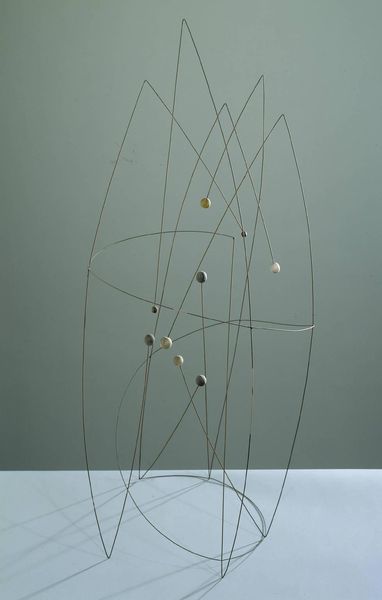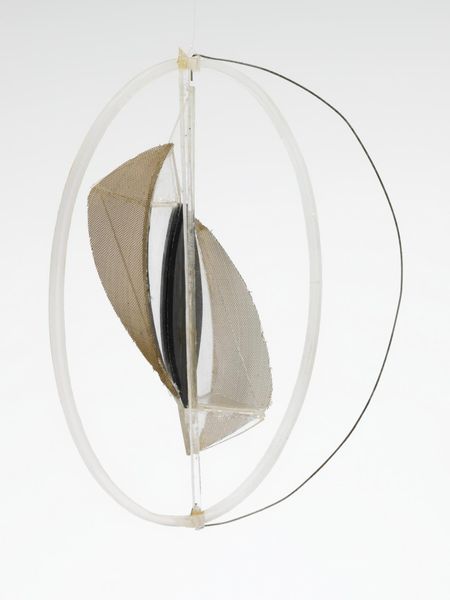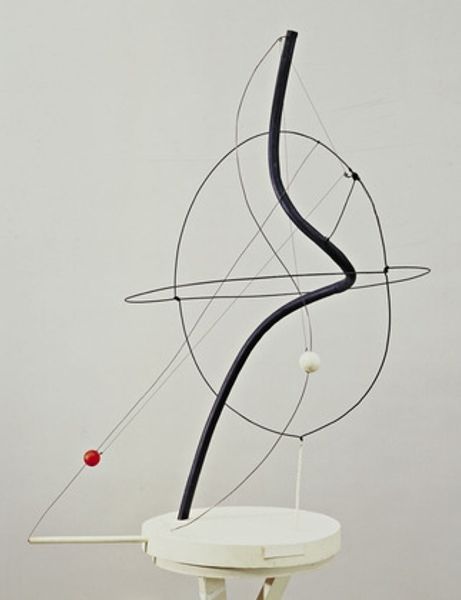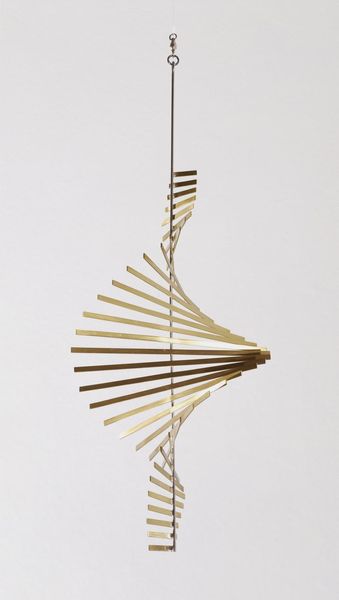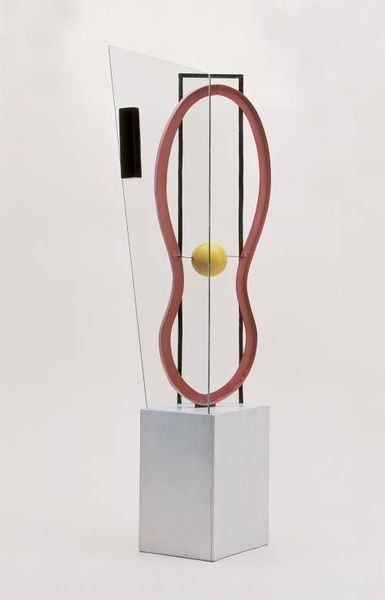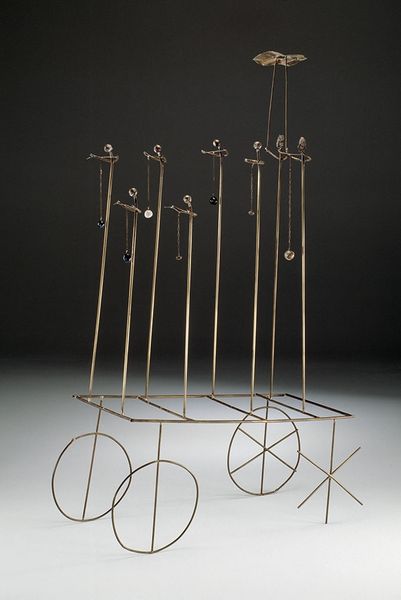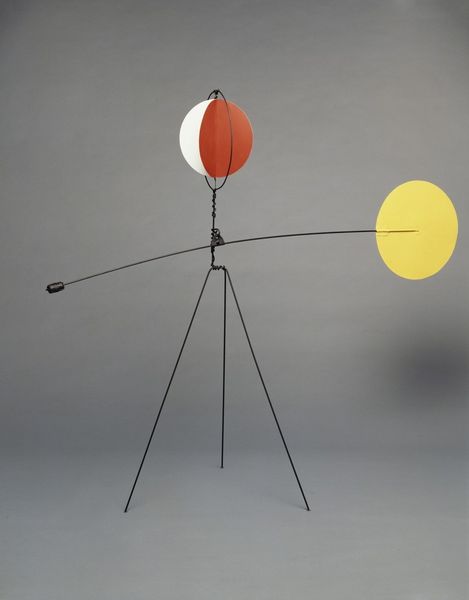
metal, sculpture, mobile
#
abstract-expressionism
#
kinetic-art
#
metal
#
geometric
#
sculpture
#
mobile
#
abstraction
Copyright: Alexander Calder,Fair Use
Curator: Good morning. Today we are observing “ASPEN,” a captivating mobile crafted by Alexander Calder in 1948. Editor: It strikes me as a whimsical solar system, somehow both playful and deeply meditative. What a wonderful balance. Curator: Indeed. Calder’s masterful use of metal transforms simple shapes into a dynamic, balanced composition. The mobile is constructed using a combination of stationary and suspended elements. Notice the interplay between the dark biomorphic, perforated plate and the delicate white discs poised above it. Editor: The color contrast immediately captures the eye. Also, I’m intrigued by how the hanging pieces, suspended below, seem to anchor the composition, creating visual tension and a sense of groundedness. Was this piece, being produced in the post-war period, exhibited widely? What would people make of this? Curator: Calder enjoyed considerable patronage and exhibitions throughout his lifetime. Post-war audiences gravitated to art like this for its apparent joy, lightness, and freedom. The open forms reject traditional sculpture’s mass, embracing transparency and motion—qualities aligning with a modernist era constantly confronting a new world, especially the relationship between the individual and progress. The movement introduced by Calder undermines traditional values and ideals found in conventional sculptures. Editor: It's fascinating to consider that against the backdrop of historical transformation. Beyond its formal beauty, the kinetic element truly changes the artwork from something static, or representational, into something lifelike and reflective of human freedom. One wonders about the limits that shaped postwar lives. Curator: Precisely. The shapes themselves are mostly abstract; it becomes an interesting investigation on pure form, rather than concrete references. It allows Calder to focus entirely on relationships, balance, movement. Editor: After careful consideration, my feeling is that pieces like "ASPEN" offered the postwar audience much more than pretty shapes; it's really about liberating oneself in a moment that many didn't have access to, as they struggled with changing geopolitical landscapes, emerging consumerist cultures, and the paradoxes that came with it. Thank you for this discussion. Curator: Thank you. It has been insightful to explore Calder's formal strategies and how they engage with our histories.
Comments
No comments
Be the first to comment and join the conversation on the ultimate creative platform.
